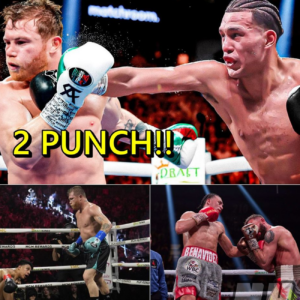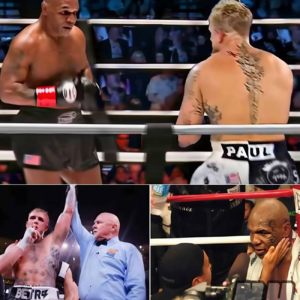Taylor Swift vs. The Beatles: A Comparative Analysis of Musical Giants
 In recent discussions, Taylor Swift has often been compared to The Beatles, raising the question: is she as influential or even bigger than the legendary band? This debate isn’t merely about chart performances but encompasses broader aspects of music production, cultural impact, and the evolution of the music industry itself. Rick Beato, a prominent music producer, recently explored this topic, shedding light on the different contexts in which these artists have risen to fame.
In recent discussions, Taylor Swift has often been compared to The Beatles, raising the question: is she as influential or even bigger than the legendary band? This debate isn’t merely about chart performances but encompasses broader aspects of music production, cultural impact, and the evolution of the music industry itself. Rick Beato, a prominent music producer, recently explored this topic, shedding light on the different contexts in which these artists have risen to fame.
Chart Performances: A Numbers Game
A significant aspect of the comparison between Taylor Swift and The Beatles is their chart performances. The Beatles, within a span of six years (1964-1970), achieved 20 number-one hits. Swift, on the other hand, took 12 years (from the mid-2000s) to secure 12 number-one hits. The Beatles’ rapid success, particularly in the mid-60s, is unparalleled, with classics like “I Want to Hold Your Hand,” “She Loves You,” and “Can’t Buy Me Love” dominating the charts.
Beato highlights the different eras in which these artists have thrived. The Beatles’ music was consumed through album purchases and radio play, a stark contrast to today’s streaming-dominated industry. Swift’s success in a digital age, where streaming numbers play a crucial role, complicates direct comparisons. The way music is produced, distributed, and consumed has dramatically changed, making it unfair to compare their chart successes without considering these evolving dynamics.
The Evolution of Music Production
The production processes behind the music of The Beatles and Taylor Swift differ significantly. The Beatles, composed of John Lennon, Paul McCartney, George Harrison, and Ringo Starr, primarily wrote and performed their music. Their songs were often created through collaborative jam sessions and live studio recordings, producing a raw and authentic sound.
In contrast, modern pop music, including Swift’s, often involves numerous collaborators and advanced production techniques. Swift’s songs are typically crafted with the help of renowned producers and songwriters like Max Martin, Jack Antonoff, and Aaron Dessner. Beato illustrates this by dissecting Swift’s hits such as “We Are Never Ever Getting Back Together” and “Cardigan.” These tracks feature instrumental “bed tracks” created by producers, over which Swift writes and records her lyrics and melodies. This collaborative approach is standard in contemporary pop music but contrasts sharply with the Beatles’ self-sufficient songwriting and recording methods.
Cultural Impact and Innovation
Culturally, The Beatles’ influence extends beyond music. They revolutionized the music industry, introduced new recording techniques, and influenced fashion, film, and global youth culture. Songs like “Hey Jude,” “Let It Be,” and “Come Together” have become timeless anthems, and the band’s experiments with different musical styles and recording technologies set new standards.
Taylor Swift, while immensely successful, operates within a different framework. Her innovations lie in her ability to reinvent her musical style and persona. Swift has transitioned from country to pop and then to indie-folk, collaborating with top producers in each genre. Her strategic reinventions keep her music fresh and relevant, appealing to a broad audience. Swift’s impact on commerce, social media, and her role as a content creator parallels the strategies of modern influencers more than traditional musicians.
The Role of Collaborators
One critical distinction Beato makes is the role of collaborators in Swift’s success. Unlike The Beatles, who relied primarily on their internal synergy, Swift’s music often involves a multitude of co-writers and producers. For instance, “We Are Never Ever Getting Back Together” was co-written with Max Martin and Shellback, while “Cardigan” involved Aaron Dessner. These collaborators bring their expertise in production, instrumentation, and songwriting, contributing significantly to the final product.
The Beatles’ music, conversely, was a product of their collective creativity. Songs like “Yesterday” and “Something” were born out of individual and group efforts within the band, without external input. This difference underscores the collaborative nature of modern pop music compared to the more insular creative process of The Beatles.
Technological Advancements
The technological advancements in music production and distribution also play a crucial role in this comparison. The Beatles recorded on analog equipment, with limited tracks and editing capabilities. Their innovative use of multitrack recording, tape loops, and studio effects like reverb and delay was groundbreaking at the time.
Swift, however, benefits from advanced digital recording technologies, allowing for precise editing, layering, and effects. Software like Pro Tools enables producers to create intricate “bed tracks,” which Swift then enhances with her vocals and lyrics. This technology-driven approach allows for a polished and meticulously crafted sound, distinct from the organic and experimental recordings of The Beatles.
Conclusion: Different Eras, Different Measures of Success
In conclusion, comparing Taylor Swift to The Beatles involves understanding the vastly different contexts in which they operate. The Beatles’ unparalleled influence on music and culture in the 1960s set a benchmark that continues to resonate. Their innovative approaches to songwriting, recording, and performing created a legacy that is still studied and admired.
Taylor Swift’s success, while monumental, is shaped by modern music production techniques, digital distribution, and her ability to adapt and evolve. Her impact is significant in the realms of social media, commerce, and her role as a content creator. While she may not eclipse The Beatles in terms of cultural and musical innovation, her achievements in the contemporary music industry are undeniably impressive.
Ultimately, both The Beatles and Taylor Swift have left indelible marks on music history, each defining their respective eras. The comparison highlights the evolution of the music industry and underscores the unique contributions of these two musical giants
News
‘ VIDEO ‘ Leaked Information Benavidez Surrendered After Receiving 2 Punches In The Nose From Canleo Alvarez ️ ️🥊✊ FULL VIDEO 👇👇
In an unexpected twist that has sent shockwaves through the boxing community, leaked information reveals that David Benavidez allegedly surrendered after receiving two powerful punches to the nose from Canelo Álvarez. The news, which emerged from a confidential source, has…
Mike Tyson Was ‘Knocked Out’ By Jake Paul After Just 2 Punches! Information Leaked.. 😱 🥊 FULL VIDEO 👇
In a stunning revelation that has taken the boxing world by surprise, leaked information suggests that the legendary Mike Tyson was “knocked out” by YouTube star-turned-boxer Jake Paul after just two punches. The news, originating from an undisclosed source, has…
Video Of Tyson Fury Successful When Only 4 Punches Killed Usyk In The Rematch Earlier Than Expected FULL VIDEO 👇👇
In an unprecedented turn of events, a video has surfaced showing Tyson Fury achieving a stunning victory over Oleksandr Usyk in their highly anticipated rematch. The footage, which has quickly gone viral, reveals that Fury managed to defeat Usyk with…
“HE’S 🐁” – Naoya Inoue Angrily Criticized Tank Davis For Being Cowardly For Not Accepting Defeat Due To His Own Ability
In a heated exchange that has sent shockwaves through the boxing community, Naoya Inoue has publicly criticized Gervonta “Tank” Davis, accusing him of cowardice for not accepting defeat due to his own abilities. Inoue’s harsh words came during a recent…
Terence Crawford Has No Doubt Who Shakur Stevenson’s Toughest Opponent Will Be
Terence Crawford has seen the skillset of Shakur Stevenson up close and personal. The two world champions are friends and occasional sparring partners despite the difference in weight, often sharpening their tools ahead of high-level title bouts. Stevenson is currently…
Gervonta Davis Talked Continuously During Heated Press Conference Faceoff Frank Martin, Proving Mike Tyson Mocking Tank Davis is ‘talkative woman’
The tension was palpable at the recent press conference faceoff between Gervonta “Tank” Davis and Frank Martin, but what stood out most was Davis’s continuous talking throughout the event. This relentless chatter seemed to reinforce Mike Tyson’s previous mockery of…
End of content
No more pages to load











